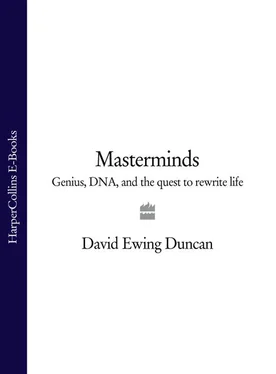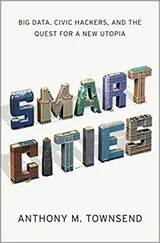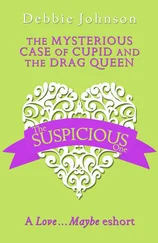Experiments are under way to create new forms of life. The geneticist J. Craig Venter, cosequencer of the human genome, is creating at his nonprofit Institute for Biological Alternatives the first synthetic life-form. Working in Rockville, Maryland, with the Nobel laureate Hamilton O. Smith and funded in part by $12 million in grants from the U.S. Department of Energy, Venter wants to create a simple microbe designed to munch up carbon dioxide pollutants in power plants and to release harmless hydrogen. This sounds wonderful, though this technology could also be used in the wrong hands to create organisms for more nefarious purposes such as bioterrorism. Or one of these critters might be released into the ecosystem for a useful purpose, only to mutate or evolve into something deadly. As a nonscientist enthusiastic about science, I am properly awed by the possibilities. I also wonder, at times, whether I should be afraid. I lean more toward amazement than not, but I am skeptical, too, strongly believing that nonscientists need to do their homework to understand the new science, to be informed enough to be impressed, cautious, or afraid. Most of all we need to stop being mystified, to learn enough to question intelligently and to push our high priests of science to explain what they’re up to.
Lest we forget, periods of explosive scientific achievement and technological breakthroughs have always created the potential for both miracles and horrors. DDT rid the West of malaria-bearing mosquitoes and other pests but poisoned birds and other animals, including humans; electricity lights our cities and powers our factories, but touch a live wire, and zap!; fossil fuels have provided us with fuel to zip about in the air, and on the land and sea, but befoul skies and cause global warming. The list goes on in the pluses and minuses of television that educates and enervates, drugs that cure and cause side effects, cars and airplanes that convey us places but also turn lethal if they crash and burn. The most classic example of all occurred when the physicists of the early twentieth century found their dazzling theories turn into not only the transistor and spaceflight, but also the bomb. The Manhattan Project chief Robert Oppenheimer, for one, spent the rest of his life after Hiroshima and Nagasaki trying to reconcile his conscience for his role as a scientist in creating this awesomely deadly weapon. “It is not possible to be a scientist unless you believe that the knowledge of the world, and the power that this gives, is a thing which is of intrinsic value to humanity, and that you are using it to help in the spread of knowledge,” he said in the autumn of 1945, three months after the bombs erupted over Japan, in what could be considered a classic statement of a modern scientist justifying his work. Yet he added an important caveat: “and are willing to take the consequences.”
The last century contains many other examples of science’s running amok: the sick experiments of Josef Mengele at Auschwitz; the program at Tuskegee, Alabama, in which black sharecroppers who had syphilis were denied treatment for forty years by researchers who were studying the effects of the disease; and the bioengineering of super-virulent smallpox variants by Soviet virologists working for the secret Soviet bioweapons program during the sixties, seventies, and eighties. * Laid alongside the wonders of the last century, the dangers of modern science and technology are accepted by people in an ongoing Faustian bargain that has become a cliché of B movies and science fiction novels. Mary Shelley helped launch the notion of the modern mad scientist in 1810, inventing the character of the young idealist who sets out on a quest to understand the intricacies of nature and life and ends up with Boris Karloff in green makeup with bolts in his neck.
This bargain is tempered by a demand that governments remain vigilant against future Frankensteins and Mengeles, while ensuring safety whenever possible as science moves forward. Watchdog agencies such as the U.S. Food and Drug Administration and ethics committees in universities, hospitals, and businesses have been assembled to oversee experiments and the release of new products and hopefully to head off anything that might prove dangerous. The tension between how safe is safe and the pressure from scientists to test new discoveries is one of the defining aspects of modern science and culture. Most scientists insist on a code of ethical conduct in keeping with current norms of human rights and dignity, keenly aware that despite science’s power and clout, the public has little patience for errors that endanger people or overtly imperil the environment. They have no tolerance at all with scientists who would delve into the territory of a Mengele or a Frankenstein, even inadvertently.
This is reassuring, up to a point. Yet as we plunge into tinkering with the basics of life, can we know for sure what they—and we—are doing, and what its impact will be?
Most scientists tell me not to worry: that we humans have not yet destroyed ourselves or the planet, and that on balance science has been an overwhelming force for the good. Yet others worry that we are entering unchartered territory without really understanding the implications. “We have to decide soon what kind of society we want,” says the Oxford neurogeneticist Susan Greenfield, a baroness and member of the House of Lords, and an author who writes about the brain and the social impact of genetics. “For instance, do we want a world where everyone takes Prozac, uses Botox, and plays with Gameboys? We could be heading into a designer-baby world where we sit passively in front of our screens and live in a virtual world. Do we want that?”
The other day I reread the self-description of Victor Frankenstein in Mary Shelley’s classic, who early in the story describes his intentions. “It was the secrets of heaven and earth I desired to learn; and whether it was the outward substance of things, or the inner spirit and the mysterious soul of man that occupied me, still my enquiries were directed to the metaphysical, or, in its highest sense, the physical secrets of the world.” Shorn of the stigma of being spoken by the lips of Dr. Frankenstein, these words could easily describe many of the subjects of this book.
Yet we hardly know the scientists and others sweeping us into this new world, the Stefanssons, Greenfields, and Venters. Their names are mostly obscure outside molecular biology. In part this is because journalists tend to write articles trying to explain the intricacies of proteomics, genetically modified organisms, ribonucleic acid (RNA), transgenic animals, and therapeutic cloning—and the ins and outs of start-ups, initial public offerings (IPOs), and roiling markets. We mention characters like Kari Stefansson, scratching out quick, throwaway descriptions, treating them as secondary to the science and the spreadsheet. Science writers scribble endless books on the solving of the human genome, stem cells, and cloning, often failing to delve seriously into the phenomenon of an age that is producing, all at once, a remarkable profusion of brilliant, quirky, charismatic, possibly dangerous scientists whose work will profoundly impact life itself.
Who are they? Are they megalomaniacs with supersized egos, or individuals of high ethics and morals who will do what one of them, Stanford’s Paul Berg, did when he was in the middle of an experiment in 1971? Berg was creating a hybrid molecule by combining a common bacterium with a monkey virus. He planned to insert his hybrid into Escherichia coli , a benign bacterium found in the stomach of nearly every human on Earth. But the monkey virus, SV40, had been shown to cause cancer in mice and might cause cancer in humans—or not. No one at that time knew for sure, though they now know the virus is most likely harmless in humans. Back in 1971, another scientist alerted Berg to the possible danger of this hybrid molecule’s escaping his lab and infecting E. coli in the stomachs of his lab workers, and possibly beyond, potentially unleashing a cancer plague. This scenario was remote, but Berg could not eliminate the risk 100 percent. So he shut down the experiment, wanting to be cautious about the implications of what became known as recombinant DNA—now used as a basic component of genetics and biotechnology. Would this method of using one organism to produce the proteins of another lead to freakish disasters?
Читать дальше












